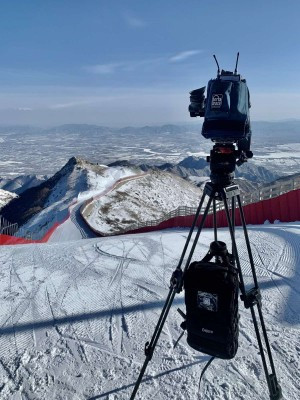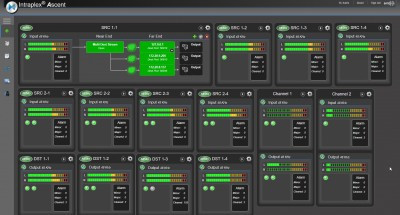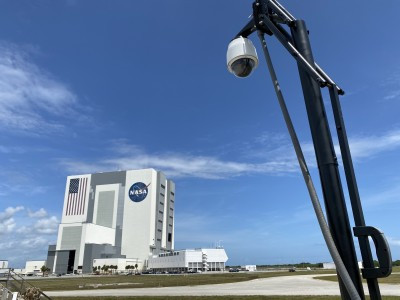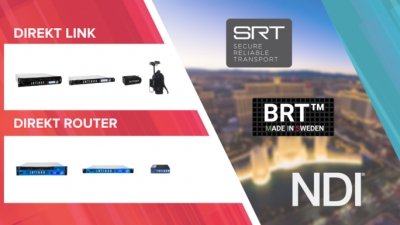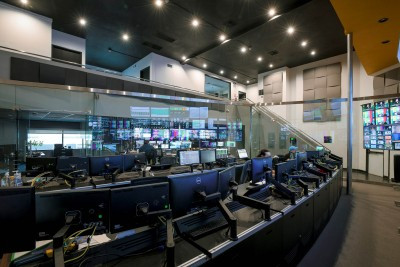Using Multipoint Monitoring to Ensure Reliable Digital Video Delivery

Author: Bob Pank#
Published 1st March 2011
Because the quality and bandwidth-efficiency advantages of digital over analog methods have made digital transport preferred, the world continues its migration to an all-digital approach to delivering video signals – from the studio through distribution networks to the end-viewer. As with any new technology, adopting and integrating digital video delivery brings new and diverse challenges – challenges that may affect video quality and delivery reliability in unexpected (and undesired) ways. A key component of reliable delivery of high quality digital signals is proper adherence to digital video standards such as those relating to MPEG-2, MPEG-4, ATSC, and DVB. For example, in the U.K. – and throughout Europe and the rest of the world – ETSI TR 101-290 has been widely adopted as a crucial set of video transport quality standards.
Manufacturers like SENCORE are thoroughly familiar with the complexities of digital video signals and have devised cost-effective technology solutions to support the kind of consistency and quality that keeps viewers tuned in. Among these solutions is continuous, multipoint monitoring, a process that supports quick diagnosis and troubleshooting across a variety of signal paths, including terrestrial broadcast, cable head-end, satellite, and IP networks.
In the days of analog video, monitoring the consistency and quality of an RF signal was usually enough to ensure optimal reception. In today’s complex, multi-format broadcast environment, determining the cause of a reception problem necessitates a monitoring solution that is vastly more sophisticated. Today’s solution must be able to monitor a variety of interfaces, including RF and IP; recognize how the specific delivery network affects video quality; and quickly identify the various types of digital video signal issues. In addition, for signal monitoring to be successful, it must take place at multiple points within the delivery network.
Multipoint monitoring simultaneously compares signal integrity, levels, and other QoS parameters at each critical node where the signal is received, thus providing a comprehensive picture of how the network is affecting the signal. Multipoint monitoring tests for ETSI TR 101-290 compliance as well as for MPEG formatting and structure at the source – through to the head-end and down to the customer. The signal at each node is checked against measurement thresholds and compared with the source signal to ensure the data delivered to the viewer remains the same. This process assures that neither the network nor its components are compromising the video signal by dropping or delaying critical packet data.
How Transport Stream Monitors Work
In all, there are about a dozen tests that a transport stream monitor performs continuously on the signals received. Dedicated hardware cards on the monitor inputs time-stamp each packet as it arrives. The monitoring system then analyzes that timing data and compares the results to the applicable standards. For example, every data stream includes PAT tables containing the information that enables MPEG services to be decoded. The ETSI TR 101-290 standard dictates that those PAT tables should be repeated in the stream at intervals of 500 milliseconds or less. If they aren’t, the user experience at the receiving end may be compromised. A transport stream monitor ensures that PAT tables and other data are arriving as they’re supposed to, and quickly alerts the operator if they are not.
Another important test performed by a transport stream monitor is the accuracy of the PCR (program clock reference), which enables the encoder to pass on critical timing information to the decoder. If the video images are to be accurately decoded and presented, PCR accuracy must be within 500 nanoseconds. To ensure this, the timestamps from the dedicated hardware card on the transport stream monitor are continually checked and re-checked.
To flag bit-rate problems – which may cause dropped frames – transport stream monitors assess the transport stream bit-rate as a whole and the component-by-component bit-rates for the data, video, and audio services within the multiplex. Bit-rate monitoring provides additional verification of proper re-encoding and multiplexing stages in the chain. For example, to help ensure a signal’s integrity for viewers, a stream carrying multiple HD and SD services is monitored to ensure that the sum of component bit-rates does not exceed the total bit-rate available.
Important Features to Consider Across Applications
For many years, system monitoring was performed primarily in the broadcast world. Now, users in a greater variety of media enterprises are recognizing the cost-benefits of implementing this type of monitoring approach. In assessing what devices will work best in a given application, several features should be considered. An important one is how the monitoring results are represented to the technician who has to read and interpret them. Ideally, the interface should be easy to understand so problems are obvious at a glance and troubleshooting can begin quickly. At the same time, the monitor should be capable of serving up detailed specifics of system operation before, during, and after a problem occurs. This allows the engineer to dig deeply into the data to keep problems from recurring. For example, SENCORE’s TSM 1770 presents system information using straightforward thumbnails as well as audio and video alarms, enabling even someone with minimal knowledge of MPEG to easily identify what transport stream errors are causing signal degradation.
Another feature that should be considered is flexibility. The most advanced video monitoring systems are flexible enough to support a variety of physical inputs, such as RF, GigE/Copper, and ASI. They also support multiple digital TV standards including DVB and ATSC. Finally, advanced monitoring systems should report the transport stream status of the physical layer measurements, protocol compliance, audio/video levels, and quality of service (QOS) parameters.
In Conclusion
Because today’s video delivery chains are a mix of multiple signal types, they require an advanced, end-to-end monitoring approach that is both innovative and comprehensive. Once established, such a system is highly cost-effective because it enables providers to isolate and resolve video signal problems before they have a chance to interfere with the viewer experience. As a result, operators deploying effective signal monitoring technology have the power to dramatically improve the quality of experience (QOE) for viewers – whether they are watching in the living room, on a PC, or via mobile device.
Seth VerMulm currently serves as Application Engineering Manager at SENCORE, a leading provider of signal quality and video delivery solutions designed to meet the specific needs of the global broadcast, cable, satellite, and IPTV markets.







